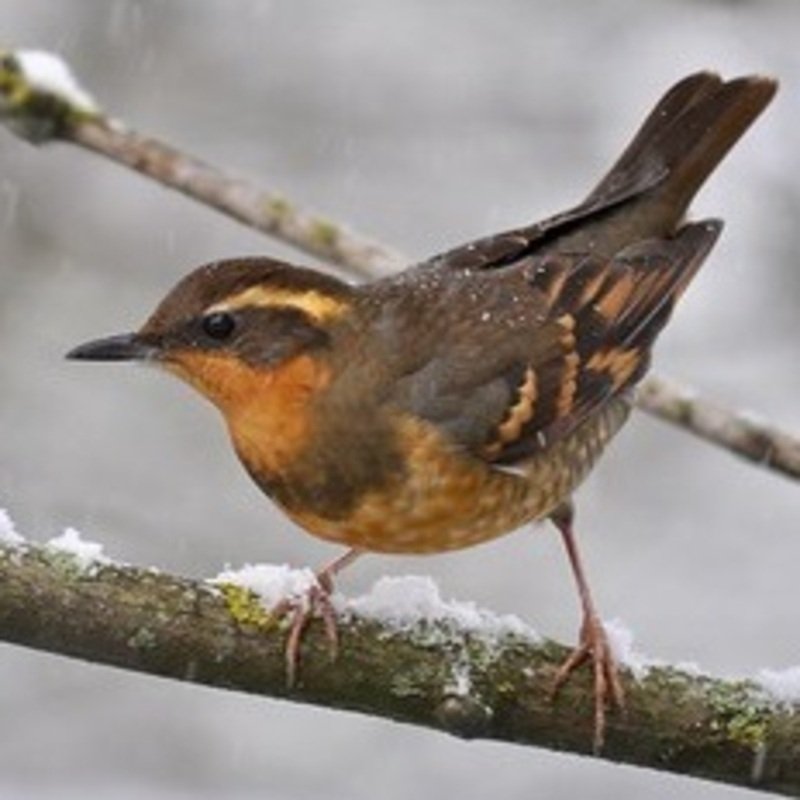The variegated thrush, Ixoreus naevius) is a Turdidae thrush. It is the only species of Ixoreus. Johann Friedrich Gmelin, a German scientist, named the variegated thrush Turdus naevius in 1789. Charles Lucien Bonaparte erected the Ixoreus genus in 1854, and the variegated thrush is now the only species.
Quick Overview: Ixoreus Naevius – Varied Thrush
Body size: Around 9.5 in (25 cm) and a weight of 77 g (2.7 oz)
Main colors: Orange, Black, Gray, Brownish – olive
Range: Rocky Mountains of Western United States
Migratory Bird: Yes
Best time of the year to see in the U.S.: January, February, December
Conservation Status: Least Concern
Varied Thrush Description
An orange face, brow, and breast with a black eye band and a black necklace or breast band define Varied Thrushes. Gray with two orange bands on the wings. Secondaries are gray with orange tips. Primaries are grayish with orange flecks. Similar to the male but duller and with brownish-olive instead of slate-grey colouring.

Size
These birds have a length of 9.5 in (25 cm) and a weight of 77 g (2.7 oz). Their wings could range from 14-16 in (36-41 cm).
Feeding
They consume fruits, berries, and acorns. Arachnids, fruits and berries are summer diet. In the winter, Varied Thrushes consume arthropods, fruits, acorns, and are attracted to backyard feeding stations. Wells et al. believe that the Varied Thrush’s population cycling is linked to the oak tree’s fruiting cycle.
Habitat
Varied Thrushes like deep, damp woods and old age low coniferous forests. The Varied Thrush prefers forests of coastal redwoods, Sitka spruce, and red alder in California and Oregon; forests of Sitka spruce, western hemlock, and western red cedar in Washington and Oregon; forests of Douglas fir, western hemlock, and western red cedar in northwestern Montana and coastal British Columbia.
Behavior
When dining with other Varied Thrushes or other birds, Varied Thrushes are known to exhibit agonistic displays. Martin (1970) described three agonistic Varied Thrush behaviors at birdfeeders in the winter. A feeding thrush will elevate its tail if it gets too close to another feeding thrush or other bird. If the subordinate bird does not retire, the thrush will thrust its head forward.
Ixoreus Naevius Scientific Classification
- Kingdom: Animalia
- Phylum: Chordata
- Subphylum: Chelicerata
- Class: Aves
- Order: Passeriformes
- Family: Turdidae
- Genus: Ixoreus
- Species: Ixoreus naevius
Best time of the year to see
The best time to see these birds in United States is during winter season (December to February).
Distribution of the Varied Thrush in the USA
Breeds in Alaska, the Yukon, and the western fringe of the Northwest Territories, as well as in Oregon, California, Idaho, Washington and Montana. Winters along the Pacific coast from coastal Alaska to southern California.
